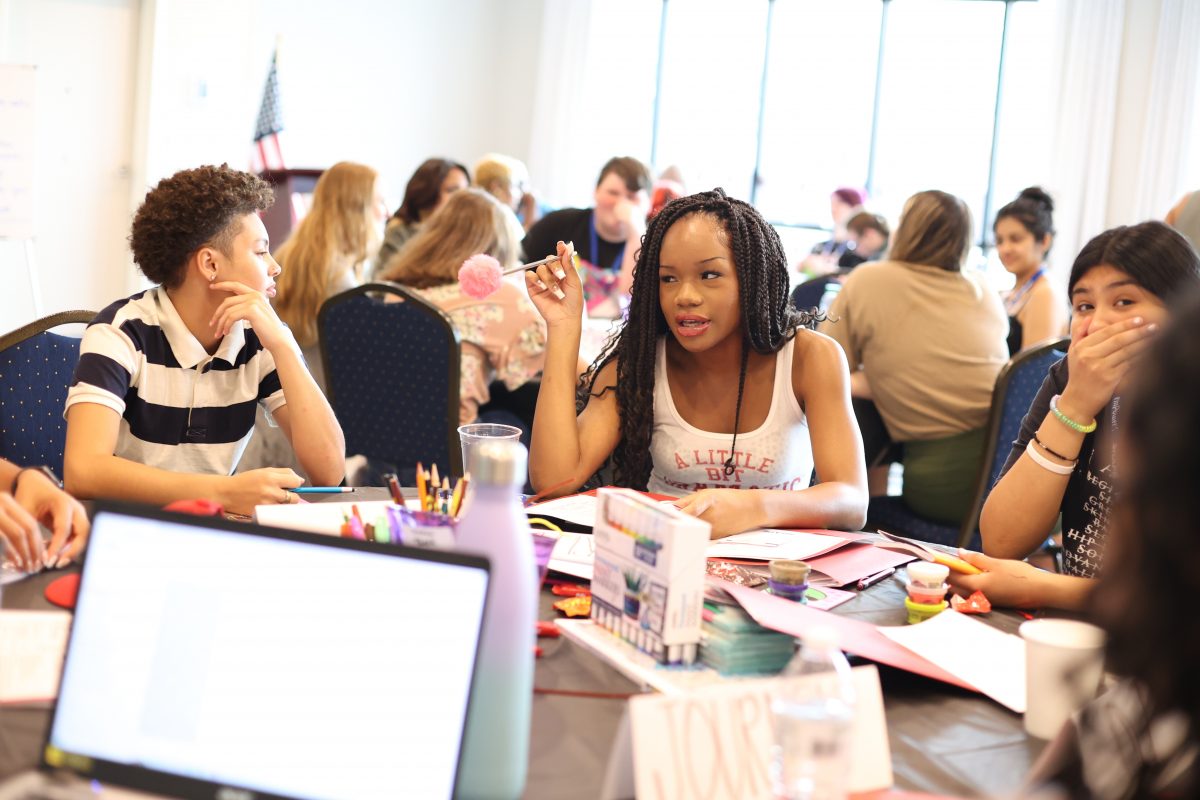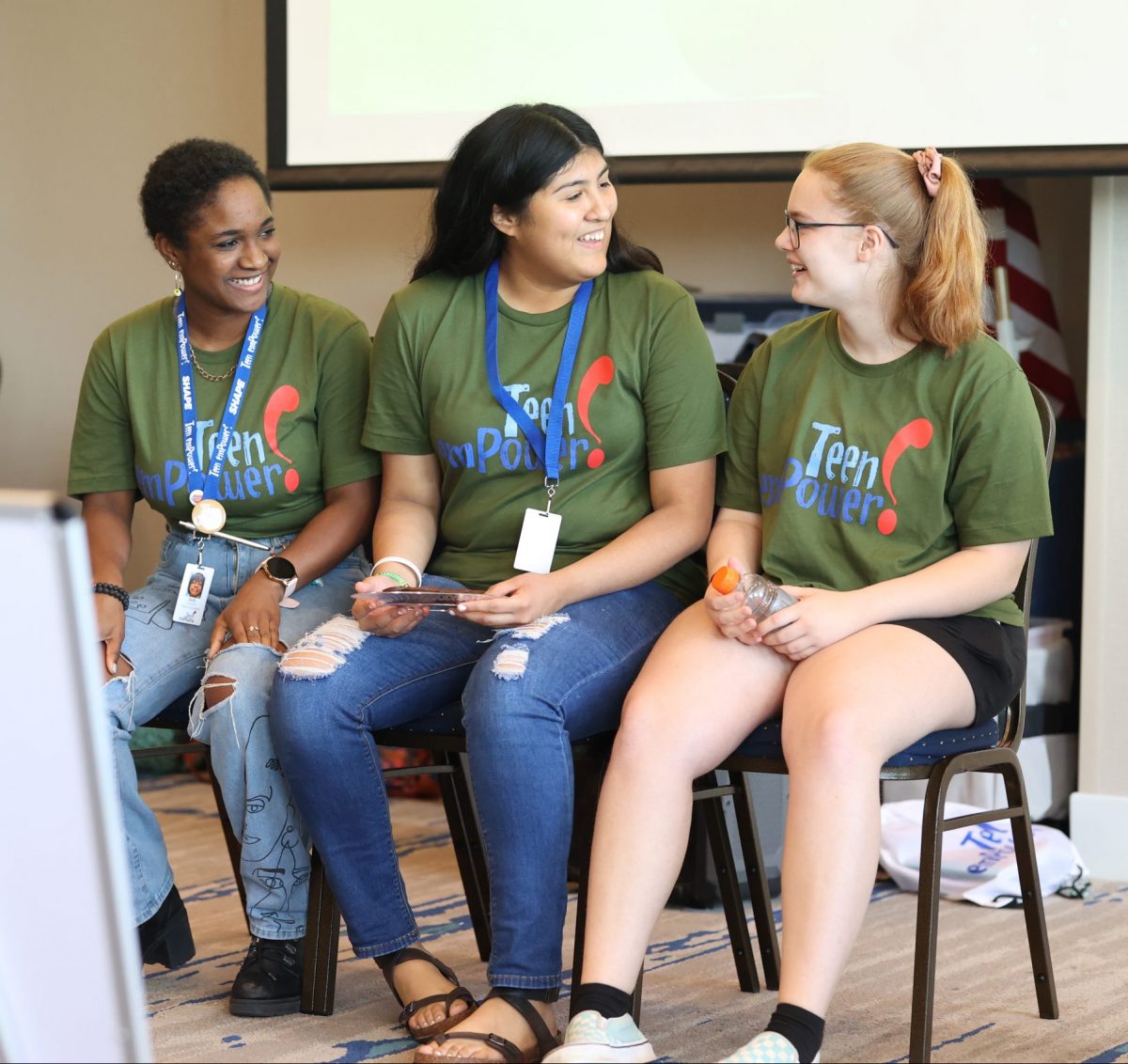Posts Tagged ‘Youth Development’
We Want Healthy Futures For Our Youth
I chose to become an educator because I want to equip youth with the tools necessary to be successful. Sexual health education particularly spoke to me because I know the potential outcomes of early sexual involvement and how these outcomes can have lasting impacts. Here at Teen emPower! Inc., we believe every young person deserves the chance to make healthy decisions that empower them to create the life of their dreams.
Of course, parents want the same thing. However, not all parents are equipped with the necessary sexual health information that young people need because of the lack of sexual health opportunities provided in our state and indeed, our country. Additionally, not all parents feel comfortable because, unfortunately, discussing sexual health topics remains taboo in many environments and cultures. That’s why we focus on teaching young people things they need to know about sexual health including consent, decision-making, relationships, self-esteem, and communication.
Today, more than ever, young people are exposed to unfiltered information via social media and the internet. While these resources can be a great source of community-building and story-telling, online sources for sexual health may not be age-appropriate or medically accurate. Teens need sexual health education provided in a safe, stable environment that will encourage them to make healthy social and personal decisions once they understand the potential outcomes of their choices.
There is a minority who would like to see sexual health education completely removed from schools. You may have seen them posting on social media or organizing public events. They are motivated by a fear-based misunderstanding of what our sexual health programs provide.
We want this group to acknowledge that our state ranks 4th highest for teen births and that 26% of new HIV infections occur among youth ages 13 to 24 years. We want them to know that the youth who experience our programs consistently report high levels of appreciation for this education and have expressed their gratitude in hundreds of thank you letters we have received.
If we want to see healthy futures for our youth, society needs to continue to support projects like our peer education program and sexual health education in schools.
- I encourage people in our community to speak up for themselves and for the young people who don’t have a political voice or who don’t vote yet. Speak up for the educational programs that help youth establish healthy goals, and speak out against those who seek to limit the impact of youth programs.
- I encourage parents to talk with their children at home about sexual health topics, including handling emotions in social settings and consent for any type of touch, not only sexual.
- I encourage teachers to speak with students about the impact they can make in their schools and overarching community so the students understand their value.
- I encourage influential adults to help youth with their developmental needs by encouraging community involvement, positive social skills, and boundary setting.
Developing assets for young people takes an involved community who is willing to devote themselves to youth needs. By supporting programs like Teen emPower!, you are supporting healthy futures for Oklahoma students.
Positive Youth Development
Stevie spends extra time after school, hanging out with friends instead of going home. Those friends sometimes do things Stevie doesn’t feel comfortable with, but Stevie doesn’t have many options since there’s no money for after school programs and other opportunities.
Stevie often shows up late to school and misses most of first period, which may lead to failing History. It was a favorite subject in middle school, but now that Stevie’s mom works overnight, getting to school on time is a struggle.
Stevie needs positive youth development opportunities, both in school and during out-of-school time, but what exactly does that look like?
Positive Youth Development (PYD) is “a research-based framework or approach that communities can use to help young people develop to their full potential.” In short, it’s programs, organizations, and relationships with people who want to enrich the lives of youth so they may learn, grow, and succeed.
When it comes to positive youth development, one might first think about all the things we need to ‘fix’, or about eliminating risk factors (things that cause negative outcomes). Reducing risks that have negative consequences should be coupled with an array of positive opportunities and experiences. However, risk reduction alone isn’t always the most effective course of action and sometimes it may not be possible at all.
Instead of focusing only on risk reduction, we should focus on building resiliency through protective factors or things that ultimately lead to positive outcomes. These factors will help protect youth from those risk factors, while also helping them gain important learning experiences and skills. Building that resiliency can carry lifelong positive effects for a young person, because we know adversity does not stop after adolescence!
Search Institute has identified two types of protective factors, which they call assets: Internal and External. You may recognize these terms from our blog about Developmental Assets. When youth have positive adult and peer role models in their life, those role models can help them develop as an individual AND protect them from negative influences.
The PYD framework primarily focuses on those external factors and seeks to make youth a part of a community based collaboration. “Rather than focusing solely on behavior change among youth, the positive youth development approach seeks to change the environments in which young people grow, act, and make decisions.” Engaging youth as partners in PYD efforts is vital to the success of effective programs.
If you’re anything like us, you’re already excited to help with positive youth development and want to know where to start.
- Mentor a young person. There are programs all over OKC, like Big Brothers, Big Sisters, that give adults the chance to work directly with the youth. Maybe this feels like a big commitment? Then try finding a young person in your life who needs some motivation and direction. That’s mentorship, too!
- Educate yourself on programs providing basic needs for young people. The Regional Food Bank of Oklahoma offers various services under their Food for Kids program. This program is especially important because, as we well know, youth cannot further develop in and out of school if their basic needs are not being met. If these programs speak to you, try to get involved!
- Support organizations that encourage young people to make healthy decisions. Our classroom educators and SHAPE program offer direct service to thousands of youth annually. The education we provide helps young people learn how to have positive relationships and keep themselves safe, while motivating them to reach their goals and dreams.
Developmental Assets and Why They Matter
Lead Author: Aicha Diop
I had just finished my teaching session and we were going around the room talking about what we learned. One student raised their hand and said, “I learned I can say no.”
Admittedly, I was taken aback because of the many layers this answer carried. In that moment I realized I not only gave students the tools to make healthy decisions for themselves but unlocked the knowledge of what it means to have bodily autonomy.
I was humbled to hear that I was so influential, but at the same time, saddened to hear they didn’t know they held those tools the whole time. It was a strong reminder how much of an impact educators, mentors, parents, and neighbors can have in helping youth build their personal strengths and assets.
This type of impact can be identified as Asset Building. In short, asset building is when adults support the development of youth by building up positive aspects of the community and social environment.
Summer 2022 the Teen emPower! staff, myself included, completed a training by the Search Institute called Essentials of Asset Building. We began the training by learning what assets are essential to youth success. These Developmental Assets are “positive experiences and qualities that all of us have the power to bring into the lives of children and youth.” They have identified 40 assets split into external and internal categories.
External Asset Categories:
Support, Empowerment, Boundaries and Expectations, and Constructive Use of Time.
Support assets can come from a variety of sources, and might look as simple as talking to your child about their day at the dinner table. Empowerment assets can also come in many different forms, like the community valuing youth success or creating an environment where youth can feel safe. Young people also thrive in structure and that is where boundaries and expectations come into play. Setting clear expectations for youth at home, at school, and in the community will help create that safe space for them to succeed. Additionally, young people can gain a lot from assets that are a constructive use of time. This could look like creating after school programs or other opportunities that build tools for youth success.
Internal Asset Categories
Commitment to Learning, Positive Values, Social Competencies, and Positive Identity.
Commitment to learning is an asset category focused on understanding that learning is important. It might look like motivation to do well in school or reading for pleasure. It’s also important that they believe in their abilities. Positive value assets could be defined as the development of a moral compass. In order to interact well with others, young people also need to develop social competencies. Examples of how to build these assets include understanding and being accepting of their peers from different cultural backgrounds, or being able to resist peer pressure to drink under age. Lastly, there are positive identity assets, which is how youth view themselves – their self esteem.
Understanding and utilizing these assets can improve the lives of our youth. They help us refocus our programs, like SHAPE, on how we can keep young people at the forefront of our decision-making and implementation processes. The 40 developmental assets reinforce what we here at Teen emPower! already know to be true. Young people need trusted, encouraging adults to thrive, and this will directly affect the future of our communities.
Anyone can be an asset-builder, starting right now.



